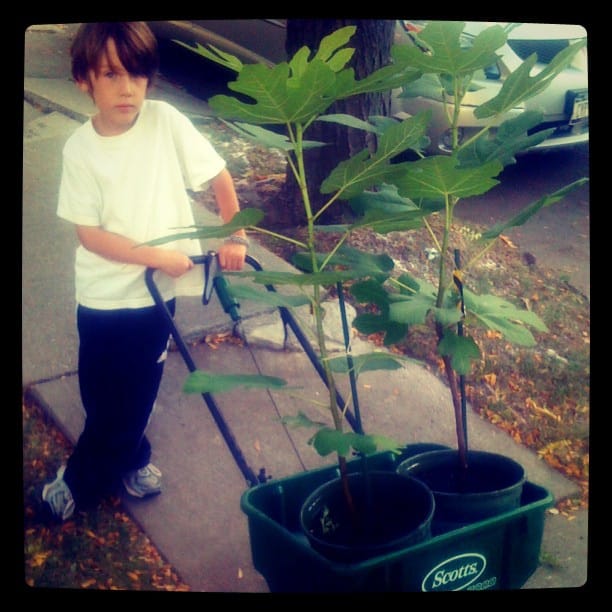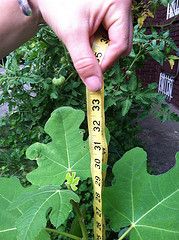Fig Trees for Sale at Sycamore


This is the year of the Brooklyn fig and fall is the perfect time to plant a fig tree. “Root systems have a good 5 or 6 weeks to settle in before it goes dormant for the winter,” explains Nelson, the Flatbush Fig Farmer.

The Fig Farmer and his sons recently delivered another batch of trees — Flatbush Dark and Flatbush White — to Sycamore Bar and Flower Shop. Nelson established the fig tree partnership with his three sons, ages 6 and under, in effort to teach them about entrepreneurism, horticulture, and citizenship. Proceeds are split equally between the business partners and a portion is donated to the Flatbush Community Garden. This year the team donated $350 to the garden.
The trees at Sycamore are descended from ones here in Ditmas Park but, beyond that, genealogy back to the Old World remains unknown. Nelson tried to uncover the scientific and common names of these exact species yet fig experts worldwide haven’t come to an agreement on the classification. Waiting for the original name to be determined, the Flatbush Fig Farmer calls the species Flatbush Dark and Flatbush White. (I thought he should have named one for his wife.) Flatbush Darks are taken from a tree on Argyle and Beverly Square West while Flatbush Whites from Marlborough and Prospect Park South.
Caring for Your Tree

Plant your fig tree on the southern side of your home so ambient heat can seep to this Mediterranean native during the winter. The trees thrive in Brooklyn dirt. The tree I bought from Sycamore last fall shot up from around one foot this spring to 31 inches around the 4th of July. It’s now 42 ½ inches. That’s nothing compared to neighbor FigMomma who commented in a previous entry on local figs. Every year, she cuts “8+ feet” off her tree, almost down to the stump. The next year, it “grows out in every direction and plugs every gap of sunlight to the earth below with its human face sized wide leaves.”

Local lore says fig owners must wrap their trees in order for them to survive the winter. If you want to wrap your tree, the Fig Farmer offered this resource, but added there is no need. Both breeds have acclimatized to Brooklyn’s winters and don’t need to be wrapped or capped, especially if planted in a sheltered, southern facing location. Part of the tree may die in an excessively harsh winter, but the protected root system will send up new shoots anyhow. Perhaps this acclimatization has altered the trees so much from their original Italian ancestors that they truly deserve their own classification.


Harvesting Figs
Figs ripen in August and September.
Flatbush Dark fruit “has been described as tasting like ripe peach,” Nelson writes. The fruit’s interior looks like red velvet cake and the outside if brownish purple when fully ripe.”
The ripe Dark fig is about 1.5” in diameter. The White is larger, 2.5” in diameter, and has a honey-like flavor. These figs soften into a yellow-brown color when ripe hinting to their taste.
What do you make with your fig bounty? Jam? Pie? Please share your fig tips and recipes as I plan to live off my figs during the apocalypse. I’m kidding, of course, but I am looking for a good fig jam recipe.




